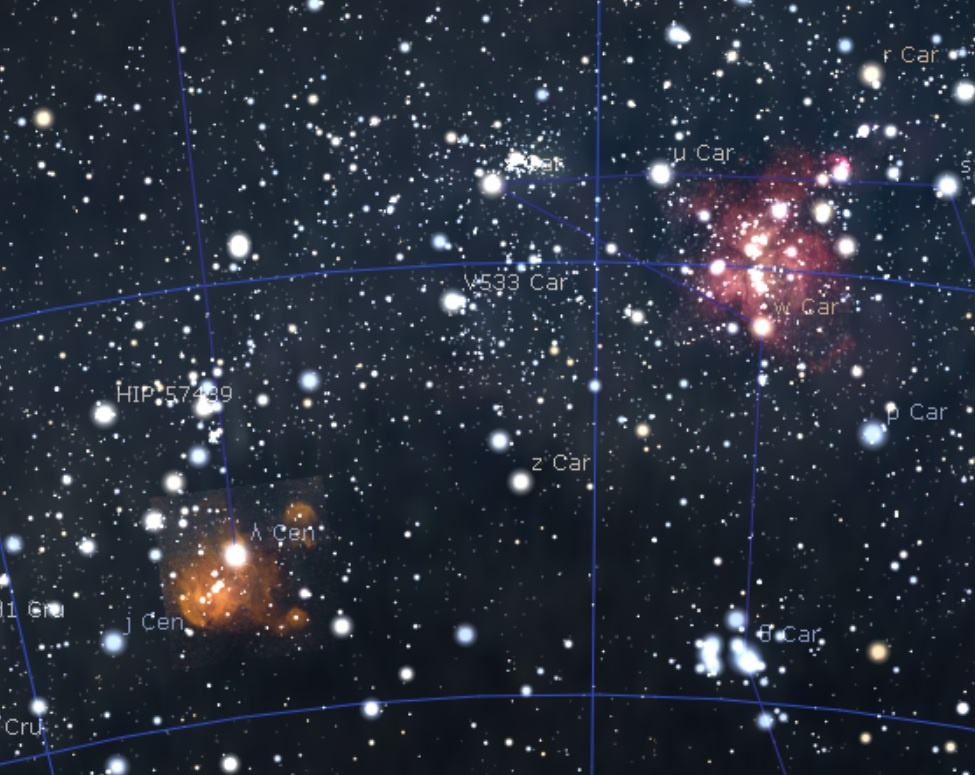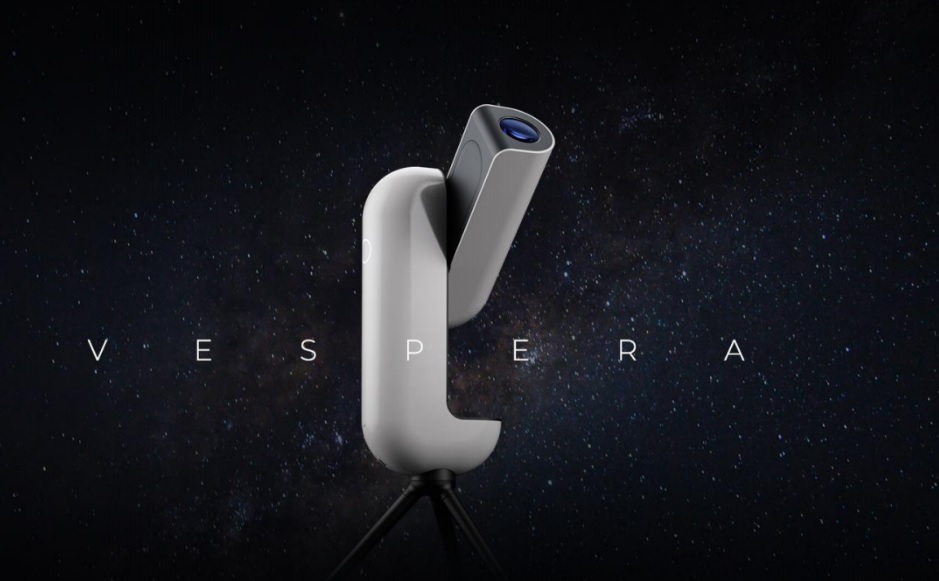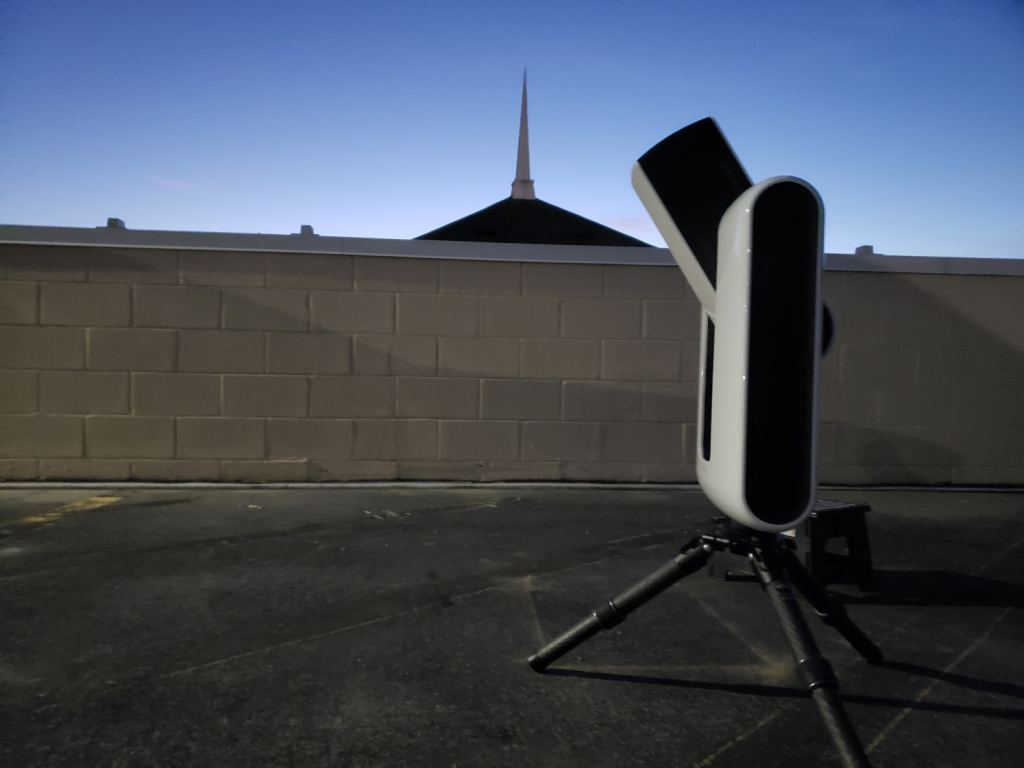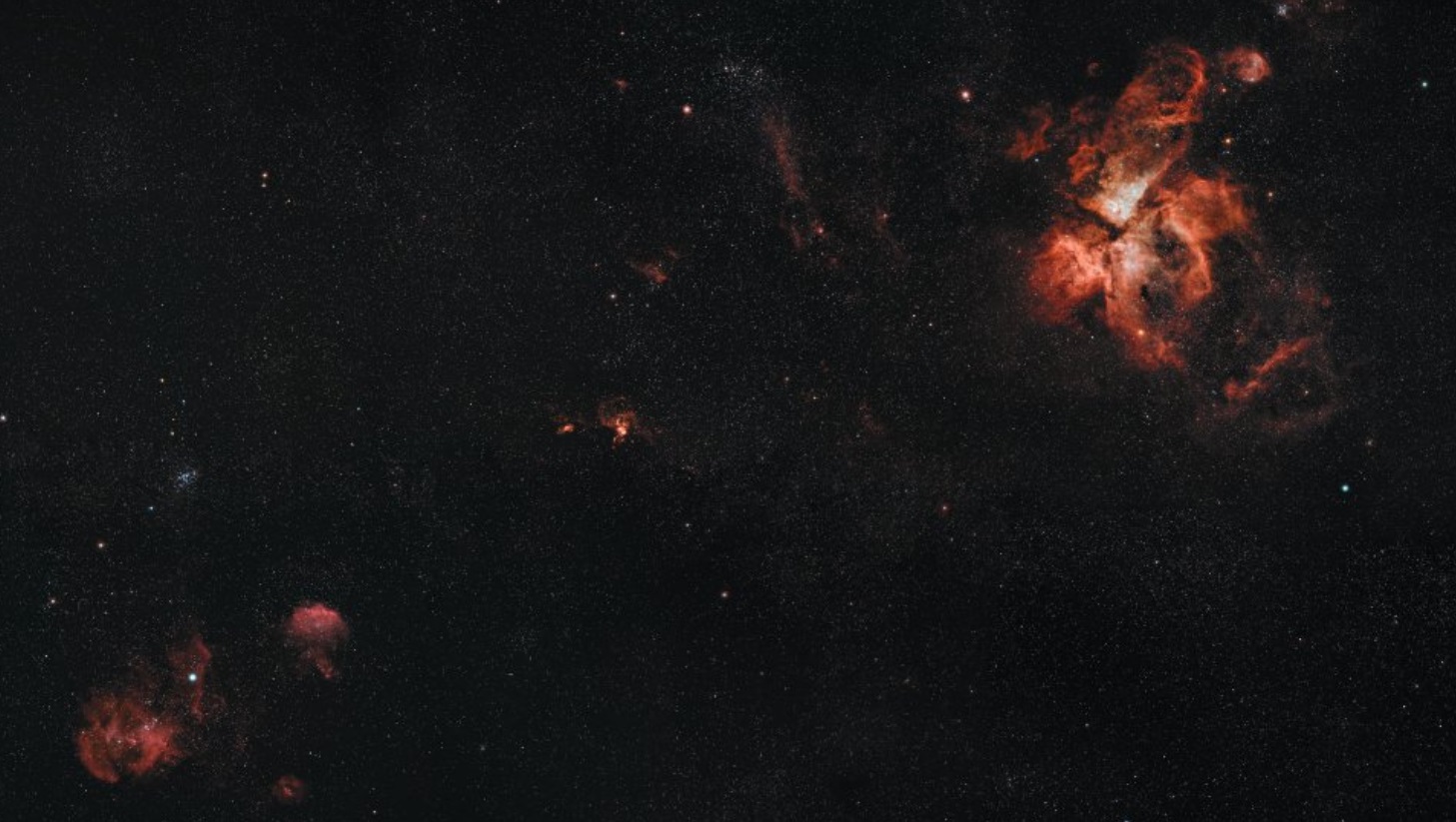Check out this stunning new deep-sky panoramic, and a new light-weight ‘smartscope,’ courtesy of Vaonis.
Smartscopes are coming into their own as a viable and exciting new facet of amateur astronomy. We’ve recently reviewed Unistellar’s evScope, and Vaonis’s Stellina telescope. Both are compact, smartphone-controlled telescopes that put simple deep-sky imaging within the user’s grasp.
Now, Vaonis is upping their game. The company recently released a sneak peek at a new upgrade to Stellina’s capabilities, and a new Kickstarter for a compact, lightweight version of the telescope, known as Vespera.
The first release is a deep-sky mosaic created using Stellina. This 550-million pixel mosaic covers 10 by 7 degrees of the southern sky, and required more than 208,000 photos to create. Conceived by Vaonis technical director Gilles Krebs, the mosaic project was carried out over 336 hours of cumulative exposure time spanning many, many nights.

Exploring the Mosaic
The panoramic is centered on the enormous Carina Nebula complex, a star-forming region 8,500 light-years (2,600 parsecs) distant. Spanning the rambling constellation Carina the Keel, the Carina Nebula complex is embedded in the Carina-Sagittarius Arm, located in the next spiral arm of the Milky Way Galaxy inward from our own towards the galactic core. The panoramic panoramic includes such notable southern sky sights as the Homunculus Nebula, the massive hyper-giant star Eta Carinae, and the Running Chicken Nebula. You can explore the high-resolution version of the mosaic here.
Astrophotographers who have created deep-sky panoramics can attest to the hours of work needed exposing frames and guiding the telescope, along with the complex post-processing workflow required to produce such an image. Now, Vaonis is looking to automate the process with its new ‘Mosaic Mode,’ which will soon be available to existing users in a 2021 app update.

A New Kickstarter for an Innovative Telescope
With the popularity of Stellina, Vaonis is also looking to add to its line. The company recently announced a new Kickstarter for Vespera, a small ultra-portable smartscope. In just over a week, the Kickstarter has hit $905,000—well past its modest $10,000 (!) goal—with the super-early bird offers at $999 bought out (there’s still $1,099 early bird classic, and $1,199 classic specials available) in fact, topping $1 million would put the project within striking range of the top 20 grossing Kickstarters of all time.
Astronauts Scott Kelly and Terry Virts are also promoting the new Vespera telescope as well.
Introducing the Vespera
Vespera will offer a 50mm (2-inch) aperture, f/4 refractor as the heart of its optical system (versus Stellina’s 80-mm f/5 system) and weighs in at 11 pounds (5-kilograms). Temperature control is at the heart of both Stellina and Vespera, allowing for thermal dispersion and focus adjustment during cool down, to help eliminate hot sensor pixels. Vespera will produce a 1.6 by 0.9 degree wide field of view, ideal for deep-sky imaging… and coupled with the new mosaic mode, Vespera will become a portable but powerful deep-sky imager,
Like Stellina, Vespera has a sleek, futuristic look, resembling a small server blade or a gun from the game Portal more than a telescope. Vespera, however, works on a single swing arm and a short but stable chicken-foot tripod.
The Vespera system will also come with built-in white-light solar and light-pollution filters, just in time for (assuming travel restrictions lift) the April 8th 2024 total solar eclipse spanning North America. Battery life for Vespera is four hours, and the first units will ship in a little over a year in December 2021.
A Truly Portable Smartscope
Like the evScope, the Vespera telescope will come with its own optional backpack. This would also meet carry-on travel restrictions, making for a complete lightweight travel package.
We’ve put the new crop of smartscopes through their paces during the 2020 pandemic lock down, and can attest to their utility. The very best telescope is the one you’ll use the most. Stellina was quick to setup and deploy, and put deep-sky imaging within reach of even our light-polluted parking garage rooftop perch in downtown Norfolk, Virginia.

The most common objection we hear to smartscopes is the price. Yes, for $3,000 dollars you could have a top-notch DSLR, auto-guider, large aperture telescope, the works… and maybe, after a steep learning curve, you could produce amazing images superior to what you’ll see on your smartphone screen. But if you simply want to explore the Universe, an uninitiated user can start imaging nebulae with Stellina tonight, right out of the box… even if you can’t find little more than the Big Dipper or Orion Nebula.
Here’s a useful analogy: should buy or make a pizza for dinner tonight? For the princely sum of $8, you could forage for and assemble the ingredients, and make a pizza from scratch… and it will probably be a better pizza, with exactly what you crave… or you could just spend $10 for a take-out pizza. Now, gourmet chefs still make their own pizza… but guess which one most people pick?
Smartscopes are here to stay, and the latest innovations by Vaonis are a hint of what’s in store for brave new world of backyard astronomy in the coming decade.
Lead image: An amazing sky mosaic taken with a Stellina telescope. Credit: Vaonis/Stellina.

